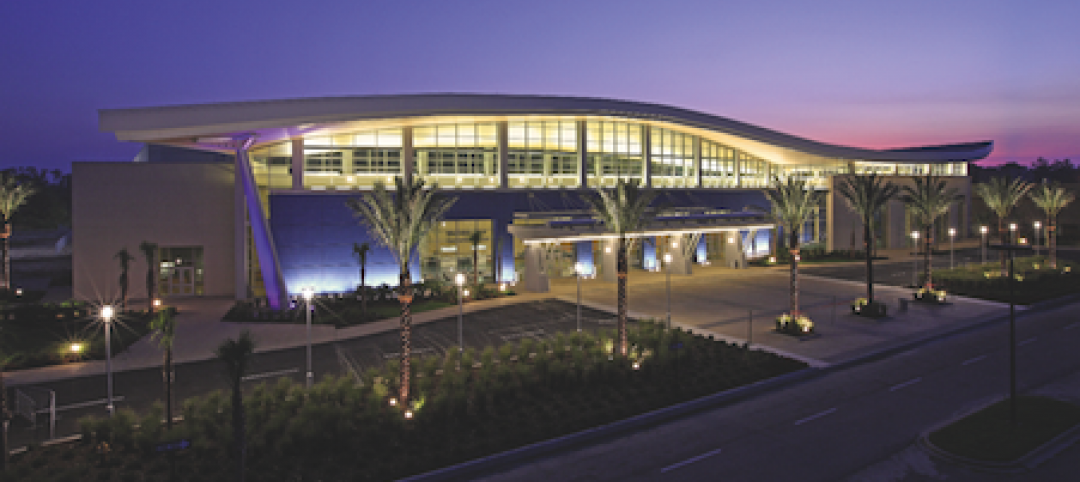The latest produce price index from the U.S. Department of Labor showed that there was a 2% drop in construction input prices during the month of January, marking the six straight month prices failed to rise, the Associated Builders and Contractors reported.
Construction input prices were down 3.6% from the same time last year. Data from the Department of Labor also showed that there was a 2.1% fall from December to January, and a 4.6% decline on a yearly basis for nonresidential construction.
While the produce price index dipped in January, there were other material prices that rose last month and included the following:
- There were only three key construction inputs that did not expand in January.
- Prices for iron and steel dropped 0.6% in January and 6.7% from the same time last year.
- Plumbing fixture prices rose 0.8% in January and 3.9% year-over-year.
- Prices for prepared asphalt, tar roofing, and siding increased by 2.7% on a monthly basis and 4.2% yearly.
- Softwood lumber prices fell 1.5% on a monthly basis and are 0.6% lower than this time last year.
“The decline in oil and petroleum prices finally showed up in the PPI data,” said Associated Builders and Contractors Chief Economist Anirban Basu. “According to the Bureau of Labor Statistics, crude petroleum prices fell 30.6% for the month and 54.8% for the year, but other input categories also experienced downward pressure, include nonferrous wire and cable and softwood lumber.”
Related Stories
| Nov 3, 2010
Sailing center sets course for energy efficiency, sustainability
The Milwaukee (Wis.) Community Sailing Center’s new facility on Lake Michigan counts a geothermal heating and cooling system among its sustainable features. The facility was designed for the nonprofit instructional sailing organization with energy efficiency and low operating costs in mind.
| Nov 2, 2010
11 Tips for Breathing New Life into Old Office Spaces
A slowdown in new construction has firms focusing on office reconstruction and interior renovations. Three experts from Hixson Architecture Engineering Interiors offer 11 tips for office renovation success. Tip #1: Check the landscaping.
| Nov 2, 2010
Cypress Siding Helps Nature Center Look its Part
The Trinity River Audubon Center, which sits within a 6,000-acre forest just outside Dallas, utilizes sustainable materials that help the $12.5 million nature center fit its wooded setting and put it on a path to earning LEED Gold.
| Nov 2, 2010
A Look Back at the Navy’s First LEED Gold
Building Design+Construction takes a retrospective tour of a pace-setting LEED project.
| Nov 2, 2010
Wind Power, Windy City-style
Building-integrated wind turbines lend a futuristic look to a parking structure in Chicago’s trendy River North neighborhood. Only time will tell how much power the wind devices will generate.
| Oct 13, 2010
Prefab Trailblazer
The $137 million, 12-story, 500,000-sf Miami Valley Hospital cardiac center, Dayton, Ohio, is the first major hospital project in the U.S. to have made extensive use of prefabricated components in its design and construction.
| Oct 13, 2010
Biloxi’s convention center bigger, better after Katrina
The Mississippi Coast Coliseum and Convention Center in Biloxi is once again open for business following a renovation and expansion necessitated by Hurricane Katrina.
| Oct 13, 2010
Tower commemorates Lewis & Clark’s historic expedition
The $4.8 million Lewis and Clark Confluence Tower in Hartford, Ill., commemorates explorers Meriwether Lewis and William Clark at the point where their trek to the Pacific Ocean began—the confluence of the Mississippi and Missouri Rivers.
| Oct 13, 2010
Community center under way in NYC seeks LEED Platinum
A curving, 550-foot-long glass arcade dubbed the “Wall of Light” is the standout architectural and sustainable feature of the Battery Park City Community Center, a 60,000-sf complex located in a two-tower residential Lower Manhattan complex. Hanrahan Meyers Architects designed the glass arcade to act as a passive energy system, bringing natural light into all interior spaces.
| Oct 13, 2010
Community college plans new campus building
Construction is moving along on Hudson County Community College’s North Hudson Campus Center in Union City, N.J. The seven-story, 92,000-sf building will be the first higher education facility in the city.

















